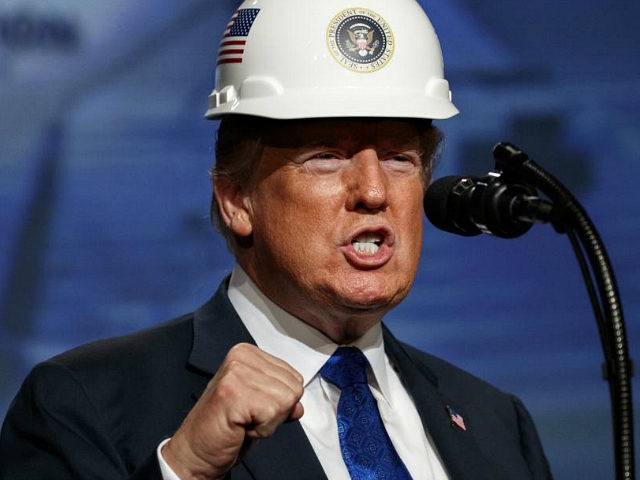The number of unfilled manufacturing jobs in the U.S. continued to climb higher in May, suggesting the sector maintains a robust appetite for workers even amid rising trade tensions and a sharp slowdown in hiring for the month.
There were a seasonally adjusted 509,000 unfilled manufacturing jobs at the end of May, up from 496,000 the previous month, the Labor Department said Tuesday.
That sets a new record for this series, besting the prior record of 501,000 set in August and November of 2018. Prior to the election of Donald Trump, open jobs in manufacturing had not exceeded 400,000 since March of 2001. May marks the 17th consecutive month above 400,000.
Reviving American manufacturing and restoring jobs for workers in the sector were key campaign promises of Donald Trump during the 2016 election cycle. While there is room for debate as to who should get credit for what is now the longest economic expansion in American history, it is clear from the data that Trump’s presidency has coincided with a boom in manufacturing jobs.
Durable goods manufacturing, factory work that involves building goods intended to last longer than a few months, also added positions in May. Unfilled jobs rose from 318,000 to 323,000, the highest level since January of 2001. Prior to Donald Trump’s election, unfilled jobs in this sector had not exceeded 220,000 since before the last recession.
Critics said that Trump’s tariffs on steel and aluminum and his trade fight with China would hurt U.S. manufacturing workers. The evidence indicates they were wrong.
The number of unfilled jobs in the overall economy fell slightly in May to 7.323 million, down 49,000 from the previous month. Still that is close to record highs and 1.4 million above the number of unemployed persons.
As Zip Recruiter Julia Pollak pointed out, the record high number of job openings was accompanied by a record high number of people voluntarily leaving government jobs. In particular, the number of people quitting state and local government jobs surged in May. A high quits number is generally seen as evidence of strong demand for workers and high levels of worker confidence.
Mining and logging job openings fell by 2,000 to 30,000 unfilled jobs. Construction saw open positions fall from 434,000 to 369,000, suggesting that some of the complaints from that industry about labor shortages may be easing.


COMMENTS
Please let us know if you're having issues with commenting.